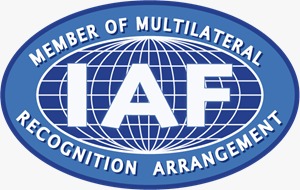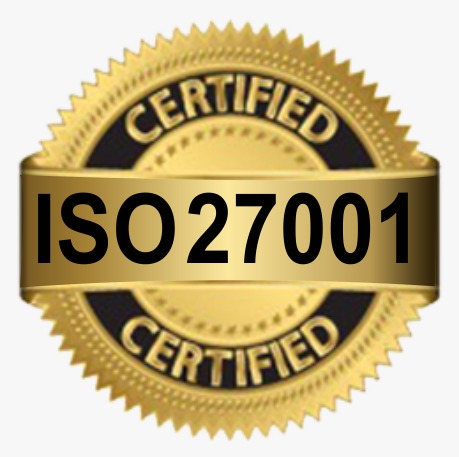1. Alternative Markets:
A term regularly utilized in hazard financing to allude to one of various hazard subsidizing procedures (e.g., self-protection, captive) or offices (e.g., ACE, XL) that give inclusions or administrations outside the domain of that given by most conventional property-casualty (P&C) back up plans. The elective market might be used by huge companies, for instance, to give high cutoff points of inclusion over huge self-insured retention (SIR), or by littler substances taking an interest in a risk retention group (RRG) or gathering hostage program. Note that the refinement among customary and elective markets will in general haze after some time the same number of conventional backup plans grow their offering of items to envelop elective sort subsidizing methods and the other way around. Likewise, review rating plans particularly paid misfortune plans, are once in a while related to the alternative market.
2. Risk purchasing groups (RPG):
A risk purchasing group (otherwise called, RPG) comprises of protection clients who get together to buy their obligation protection inclusion from an insurance agency. As the name proposes, the RPG fills in as protection obtaining a vehicle for its individuals. Buying protection like this advantages the individuals from the RPG on the grounds that it enables them to get the protection at a lower premium, with more extensive inclusion terms, and furthermore misfortune control/hazard the board programs. A gathering framed in consistence with the Risk Retention Act of 1986 approving a gathering of insureds occupied with comparative organizations or exercises to buy protection inclusion from a business back up plan. This is as opposed to a risk retention group (RRG), which really bears the gathering’s dangers as opposed to getting inclusion for the benefit of gathering individuals. Hazard buying gatherings have been utilized in numerous regions of trade, for protection purposes they were approved by the 1986 Federal Liability Risk Retention Act. Individuals frequently confound Risk Purchasing Groups with Risk Retention Groups. We will talk about the key contrasts and likenesses between the two.
3. Risk-retention groups:
A risk retention group (otherwise called an RRG) is a risk insurance agency that is possessed by its individuals. One of the fundamental attributes of an RRG is, under the 1986 Federal Liability Risk Retention Act, RRGs must be domiciled in a state. When authorized, an RRG can safeguard individuals in all states. Since the 1986 Federal Liability Risk Retention Act is a government law, it acquires state guideline, making it simpler for RRGs to work broadly. As an insurance agency, RRGs hold the hazard. A couple of points of interest might be lower rates, more extensive inclusion, access to reinsurance markets, and so on. Hazard maintenance gatherings are shared organizations, implying that they are claimed by the individuals from the gathering. They can be authorized as a standard shared safety net provider, however, they can likewise be authorized as a hostage back up plan, which is an organization sorted out by a parent organization explicitly to give protection inclusion to the parent organization. Instances of dangers ensured by RRG arrangements incorporate medicinal and legitimate negligence, be that as it may, property harm brought about by a flood is certifiably not a secured hazard. Arrangements can be claimed by a gathering of people, for example, a law office, yet they can likewise be bought by state-funded colleges or province organizations. Individuals from an RRG must be occupied with comparative exercises or related regarding risk exposures by uprightness of any related or normal business introduction, exchange, item, administration, or reason.
4. Captives:
A captive insurance agency is a completely possessed backup organization that gives chance alleviation administrations to its parent organization or a group of related organizations. A captive insurance agency may shape if the parent organization can’t locate an outside firm to guarantee them against specific business dangers, if the premiums paid to the hostage safety net provider make charge reserve funds, or if the protection supplier is progressively moderate or offers better inclusion for the parent organization’s dangers. A captive insurance agency is a type of corporate “self-insurance.” While there are money related advantages of making a different element to give protection administrations, parent organizations must consider the related managerial and overhead costs, for example, extra faculty. There are additionally mind-boggling consistency issues to consider. Therefore, bigger organizations overwhelmingly structure captive insurance agencies.
5. Rent-a-captive:
The captive protection system clarified above depends on a sound idea and has a demonstrated reputation of progress. In any case, the execution and day by day organization of this formalized self-protection vehicle require inside and out learning and experience of the protection part. Certain significant enterprises may have the ability and assets to oversee a hostage inside, yet many want to redistribute their hostage the executives to an expert specialist organization represented considerable authority around there. Correspondingly, littler and fair sized organizations can get for all intents and purposes similar advantages of owning a hostage by likewise following this course. As needs be, the idea of non-possessed hostages or “rent-a-captives” has picked up prominence. An additional in addition to is the speculation salary earned on the rent-a-captive program. This is identified with the time delay on the installment of brought about misfortunes. For instance, obligation misfortunes brought about in a particular guaranteeing year may really be paid over a five to multi year time frame or more. During this time these assets, with premiums now as misfortune saves, stay accessible for venture and the rent-a-captive member, not the business bearer, will be qualified for the salary determined.
6. Self-insured trusts:
Group self–protection plans are known by an assortment of names. A portion of these substances allude to themselves as different boss trusts, others as affiliation trusts, and some as self–insured consortiums. At first look, participation would give off an impression of being an affordable path for a business to secure state-commanded workers pay inclusion. However, bosses — be careful. There are numerous downsides to self–insured trusts as clarified in the graph beneath. When joining a trust, an organization has not acquired a strategy of protection. In this manner, it has not moved its hazard presentation (or its obligation for hazard) to a legitimately responsible element, for example, an insurance agency.
7. Self-insured pools:
Self Insured pools for Workers Compensation can be a great risk management technique. An employer that is not large enough to be self-insured may find that pooling their premiums and risk with homogenous entities to be a great budget saving technique. Self-insurance pools have seemed to lose popularity over the last few years. I think some of it is due to bad press. Some of the reasons for the bad press was justifiable. There are a few areas to consider when joining self-insurance pools. Bottom Line pools are great for self-insurance if properly investigated and all angles have been examined before joining the pool.
Self Insured pools for Workers Compensation can be an incredible hazard management technique. A business that isn’t enormous enough to act naturally safeguarded may find that pooling their premiums and hazard with homogenous substances to be an incredible spending sparing strategy. Self-insurance pools have appeared to lose notoriety in the course of the most recent couple of years. I consider some it is because of terrible press. A portion of the explanations behind the awful press was reasonable. There are a couple of areas to think about when joining self-insured pools. Primary concern pools are extraordinary for self-protection if appropriately explored and the sum total of what points have been analyzed before joining the pool.
8. Self-insured retention plans or SIRs:
Self-insured retention (SIR) is characterized as a dollar sum indicated in a risk protection approach that must be paid by the guaranteed before the protection arrangement will react to a misfortune. In this manner, under a strategy composed with a self-guaranteed maintenance arrangement, the protected (as opposed to the backup plan) would pay barrier as well as reimbursement expenses related with a case until oneself safeguarded maintenance point of confinement was coming to. After that point, the backup plan would make any extra instalments for barrier and repayment that were secured by the strategy.







Leave A Comment